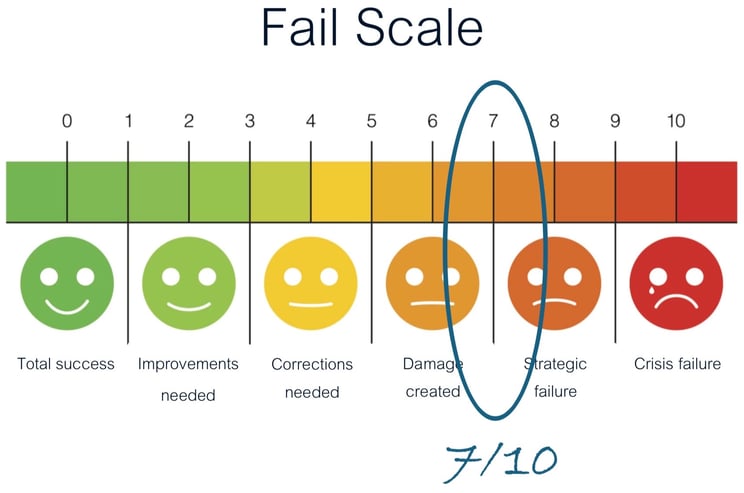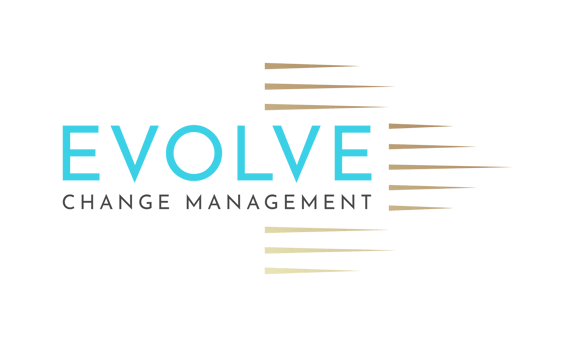



What was the intent?
An unrelenting tide of incoming queries the daily reality for the Technical Guidance Team, fuelling a growing backlog and rising staff frustration. Service complaints from case managers centred on slow response times, clunky workflow communications, and a disconnect between case managers and the technical advisors in the guidance team. The remote structure also limited opportunities for technical advisors to coach and up-skill case managers during the resolution of escalations, compounding the operational strain.
Branch management foresaw even bigger waves of case complexity looming on the horizon, reinforcing the need for stronger escalation support and skill development. Their solution was to establish a dedicated Technical Escalations Community, operating from within all case management teams, designed to speed up resolutions, promote real-time knowledge sharing, and ultimately boost staff satisfaction across the business. Yet, as this case study will reveal, a well-intentioned shift can quickly find itself in troubled waters when change management is rushed, uncovering valuable lessons for anyone steering transformative initiatives.
Pitfall #1: Warping the carefully sequenced plan
Examining the cause
A specialised change team had created a detailed roadmap for transitioning from the Technical Guidance Team to the new Technical Escalations Community. Drawing on best-practice principles and proven change methodologies, the plan balanced staff engagement, operational needs, and phased timelines to ensure a smooth rollout. However, branch management chose to sidestep essential parts of this plan, consolidating phases, skipping key checkpoints, and effectively warping the carefully laid approach, believing they could still reach the same end goals through a more direct route.
Why it matters
Strategically crafted plans aren't arbitrary; they’re crafted to sequence activities so that each output builds on the last, managing people’s readiness, operational realities, and the overall pace of change. By bypassing critical steps and milestones, management lost the integrated structure that would have guided the transformation toward its intended outcome. In other words, removing or compressing parts of a well-constructed plan means losing the very mechanisms designed to align teams, mitigate disruptions, and ensure consistent progress.
Consequences
By ignoring the blueprint set by the change team, the transition quickly lost cohesion. Roles and operations that should have been clarified remained fuzzy, training was rushed, and stakeholders weren’t fully aligned on new expectations and relationships. Instead of a carefully orchestrated shift, teams found themselves scrambling to adapt, undermining both morale and the very efficiency the change was meant to deliver.
Pitfall #2: Dramatically condensing the timeline
Examining the cause
Originally, the change plan included time for recruiting and onboarding additional technical advisors, co-designing new processes, and training staff thoroughly. Eager to see benefits sooner, management accelerated the go-live date as well as the project handover date (originally designed to occur once the new Technical Escalations Community reached a stable state - i.e. once all deliverables were fully embedded and the change evaluation was complete). Squeezing crucial activities into a much tighter window, bypassing them, or handing them over to technical management staff that lacked the requisite skills, knowledge or capacity to deliver them, had considerable downstream impacts.
Why it matters
Timelines are set based on work size and duration of dependent tasks (e.g. co-design should happen after recruitment, and training must align with newly onboarded staff’s availability). By shrinking this carefully balanced change timeline, leadership forced teams to rush, skip or hand over important steps that build readiness, and prevent confusion and gaps in capability.
Consequences
Training modules, tools and key operational details weren’t yet finalised, new staff weren’t all onboarded into their roles, and key commitments still needed development. Instead of boosting productivity, the compressed change schedule led to higher stress, suboptimal skill levels, and a scramble to fix issues that should have been addressed pre-launch.
Pitfall 3: Siloed decision-making (lack of communication & consultation)
Examining the cause
Despite risk warnings from the change team, branch management made key deviation decisions in isolation, finalising them with minimal notice and without seeking input from the change team or further staff consultation. Once these siloed decisions were communicated, the change team provided advice outlining the risks of compressed timelines and limited stakeholder engagement. However, this advice was not fully embraced. Ultimately, the siloed thinking behind these decisions proved to be a critical factor in the operational challenges that emerged during the transition.
Why it matters
A siloed decision-making process disconnects leadership from the operational realities that frontline teams experience every day. Likewise, without drawing on the collective expertise and insights of those implementing the change, decisions may overlook critical issues, leading to misaligned expectations and operational difficulties.
Consequences
The lack of broader communication and consultation when siloed decision were made, meant that valuable feedback was sidelined, and many predictable consequences unfolded over the transition and in the many months that followed. The final outcomes did not align with the practical needs of those on the ground, which ultimately compromised the strategic objectives of project overall.
Pitfall 4: Broken promises & eroded trust
Examining the cause
During the initial consultative phase, staff were promised a tactful, phased transition complete with forewarning of critical milestones, robust support mechanisms, and an agreed management structure. However, after the core design was finalised, leadership abruptly accelerated the transition and, at the last minute, altered the management structure, doubling reporting layers during an already sensitive period. These changes directly contradicted the agreed-upon framework and committments established through extensive consultations.
Why it matters
Trust is a cornerstone of effective change management. When established commitments are reversed or significantly altered without sufficient explanation or recourse, staff feel misled and unsupported. Such broken promises not only disrupt operational workflows but also diminish confidence in leadership, making future transitions more challenging.
Consequences
The sudden imposition of additional managerial layers during a critical transition left staff and managers struggling to adapt. This erosion of trust compounded the operational challenges caused by an accelerated transition, meant staff not only had to quickly learn new processes but also navigate a more complex management structure, further hindering a smooth transition.
When the Technical Guidance Team (designed to assist a vast workforce of case managers) was disbanded to make way for a new Technical Escalations Community, management promised a seismic shift in speed, agility and tailored support. Instead, productivity nosedived, morale hit rock bottom, and key talent walked out the door. The ambitious vision for 'supercharged staff support' unravelled into a glaring misfire.
In this case study, we’ll peel back the layers of this high-stakes transition, examining the flawed assumptions, communication gaps, and rushed decisions that sparked a chain reaction of setbacks. You’ll discover how small missteps can escalate into wide-ranging repercussions, and learn practical strategies to steer your own change initiatives away from a similar fate.
What actually happened
Designing a careful, phased approach
Branch management initially charged a dedicated change team to tackle the transition project of the Technical Guidance Team. The change team set out to collaboratively design and deliver the new Technical Escalations Community, using best-practice methodologies, including comprehensive co-design sessions, consultation sessions, and a phased rollout. Key project milestones were mapped out, along with action checklists for each phase. Everyone, from frontline case managers to technical advisors, was involved in shaping the final model, creating a sense of shared ownership. The change plan was also carefully designed to factor-in important elements, such as:
Targeted recruitment & onboarding
Given the existing pool of technical advisors was insufficient for the new coverage required, branch management and the recruitment team was slated to undertake onboarding of additional technical advisors prior to the rollout of training, well ahead of the transition date. The plan was designed to ensure that the influx of new staff would receive proper onboarding and training, so that the business was 'change ready' by the time that the transition took place.Co-design of roles & tools
The change plan also outlined the next steps to co-design role statements and refine the new escalation and reporting tools to be used. This would help to shape how the Technical Escalation Community would operate following transition, to stay virtually connected from within separate case teams. The change team outlined that by involving both seasoned and freshly onboarded technical advisors in the co-design process, the project aimed to balance experienced perspectives with fresh insights, to inspire a more robust solution.Ensuring true business readiness
Under this phased schedule, branch management and the change team intended to formally launch the Technical Escalations Community, after all foundational elements (staffing, training, and tool development) were complete. This approach was designed to prevent confusion, cut down on rework, and encourage smooth adoption across the organisation.
A sudden shift to ‘get results sooner’
Despite the careful groundwork completed part-way through delivery, branch management decided to accelerate the transition once the workforce design was signed off and initial staff and manager consultations were complete. Many key elements of the core design and key transition activities had not yet been completed, however, they believed that a faster rollout would generate quicker wins. Without consulting the change team, timelines for transition was dramatically brought forward, and crucial recruitment, training, and co-design of roles, tools and operations were asked to be rushed or postponed and handled by the new Technical Escalation Community managers, after the transition.
Adding to the upheaval, management also altered the reporting structure for technical advisors at the eleventh hour, doubling the layers of managers for technical advisors, despite the management design already having been socialised and agreed upon. This change was introduced during an already sensitive and tenuous period. Staff, who had been promised a measured, well-supported transition, suddenly found themselves navigating a new structure without the promised support mechanisms. This abrupt pivot not only disregarded the meticulously laid change roadmap but also set the stage for the pitfalls explored in the next section.
Expert strategies for seamless transformation
Organisational transformation isn’t about quick fixes, it demands a disciplined, results-driven approach. A robust change management framework reduces risk, aligns teams, and ensures continuity during every transition. By following a clear, structured plan, you address challenges head-on and maintain operational integrity. With rigorous planning, inclusive decision-making, and clear support structures, your organisation can avoid common pitfalls, sustain high productivity, and secure long-term success. This is not 'theoretical fluff' or 'admin', it’s the foundation for achieving measurable outcomes in today’s competitive landscape.
Foster inclusive decision-making
Cultivate a culture where every key stakeholder is heard from the outset. Engage your change team and frontline experts in shaping strategy and validating decisions. By integrating diverse insights early, you create a robust framework that reflects real-world needs and minimises unexpected disruptions.
Adhere rigorously to your roadmap
Every phase of a well-crafted change plan is essential. Resist the temptation to cut corners for quick wins. Instead, honour each milestone, from recruitment and onboarding to co-design and training. This disciplined approach ensures that the foundation is strong and that the team is fully prepared for every step of the transformation.
Build trust through consistency
Trust is the cornerstone of any successful change initiative. Maintain the commitments made during initial consultations by delivering on promises regarding timelines, support structures, and management practices. Consistency in execution not only boosts morale but also reinforces the credibility of leadership.
Align strategy with operational realities
Base your decisions on comprehensive, real-world insights rather than assumptions. Regularly gather and act on feedback from those on the ground to ensure your strategy is responsive to evolving challenges. A risk-informed, adaptive approach allows for timely adjustments, reducing the likelihood of operational bottlenecks.
Establish robust support mechanisms
Ensure that every team member has access to the resources and guidance they need to succeed during periods of change. Whether through mentoring programmes, dedicated helpdesks, or regular check-ins, strong support tools and channels can turn potential chaos into a smooth, coordinated effort.
Faulty belief #1
“We can cut, skip and delay steps and still achieve the same result.”
Reality
Each item in a comprehensive change plan is there for a reason. Skipping steps typically introduces unanticipated gaps, which then require additional fixes down the line, often negating any perceived time savings.
Pitfalls of the project
Faulty belief vs reality
Faulty belief #2
“Accelerating the schedule will help us realise benefits sooner and keep up momentum."
Reality
Rushing complex change often derails critical activities, like adequate testing and staff engagement, leading to higher long-term costs and damage to morale.
Faulty belief #3
“Isolated, management-driven decisions yield optimal strategies, due to the seniority of leadership experience.”
Reality
When management decisions are made in isolation, they often miss crucial on-the-ground insights and overlook the subject matter expertise of change managers, resulting in flawed planning and fragmented implementation.
Faulty belief #4
“When management decisions contradict prior commitments, staff will simply choose to adapt, because change adaptation is merely a matter of willpower.”
Reality
Abrupt changes, especially those that overturn previously agreed-upon structures, indirectly undermine trust and erode morale, leading to resistance and prolonged adjustment periods.
Coaching notes & best practices for future initiatives
The challenges outlined in this case study are not unique, many organisations face similar hurdles when navigating complex transformations. The difference lies in the approach taken to mitigate these risks. By fostering a disciplined, strategic approach, your organisation can avoid these common pitfalls and turn change into a strategic advantage.
At EVOLVE Change Management, we specialise in guiding organisations through every stage of transformation, from strategic planning to smooth execution. Our proven methods ensure that your change initiatives are inclusive, well-supported, and adaptable to real-world challenges.
Ready to transform your approach to change? Let’s explore how we can support your organisation in overcoming these hurdles and achieving lasting success. Contact us today for a personalised consultation - together, we’ll design a change strategy that drives results and empowers your team.
